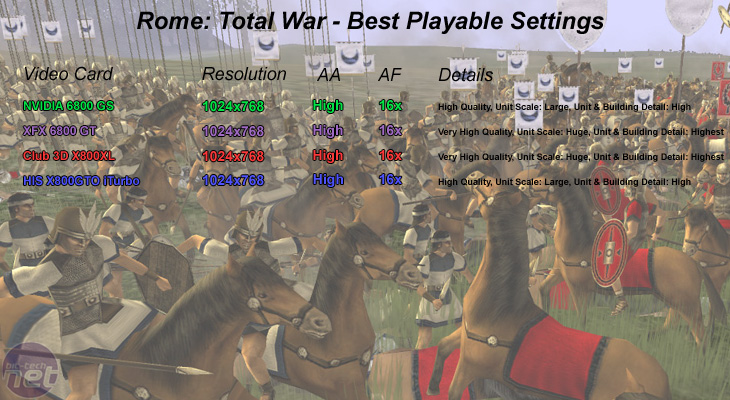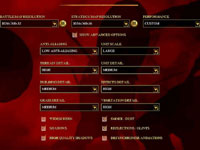
Rome: Total War
Publisher: ActivisionIn this comparison, we used the full retail version of Rome: Total War, and we've used the whole tutorial battle to record our manual run through. It section incorporates several unit movements along with a lot of units in the scene at the same time - it manages to provide a high level of stress on the video card because of the high polygon and geometry counts.
The driver control panel was used to control Anisotropic Filtering, while we left Anti-Aliasing set to "Application Preference" in order to control AA using the title's in-game graphics settings.
Below is a table of the best-playable settings that we found best for each video card configuration. The title is an RTS, so frame rate isn't quite as critical as it would be in a first person shooter, so we have aimed for 15 frames per second minimum and an average frame rate of 40 frames per second.

It seems that 1024x768 is be the optimal resolution for all of these video cards in Rome: Total War. We found that all four video cards were able to play the game with "High" Anti-Aliasing and 16xAF. The GeForce 6800 GS and HIS X800GTO iTurbo delivered comparable gaming experiences with all in-game details set to 'High'.
The Club 3D Radeon X800XL and XFX 6800 GT were slightly faster in this title - we were able to turn up all of the details to their maximum with the exception of effects, which was left at 'High'. On the whole, the Club 3D Radeon X800XL delivered the smoothest gaming experience in this title.

MSI MPG Velox 100R Chassis Review
October 14 2021 | 15:04






Want to comment? Please log in.